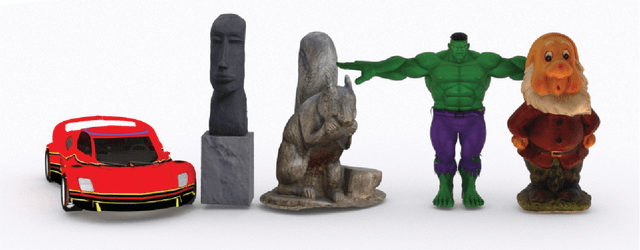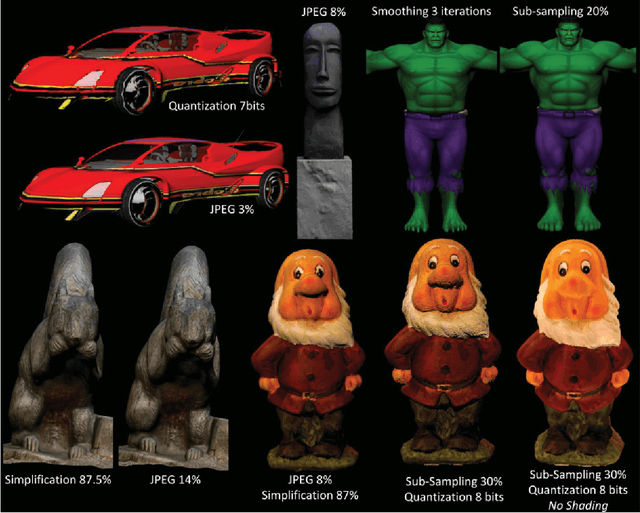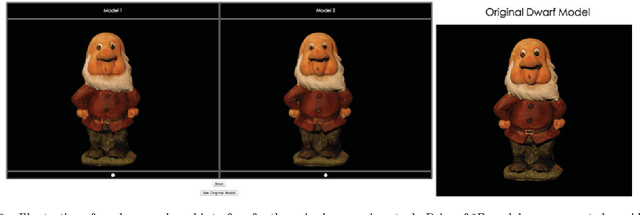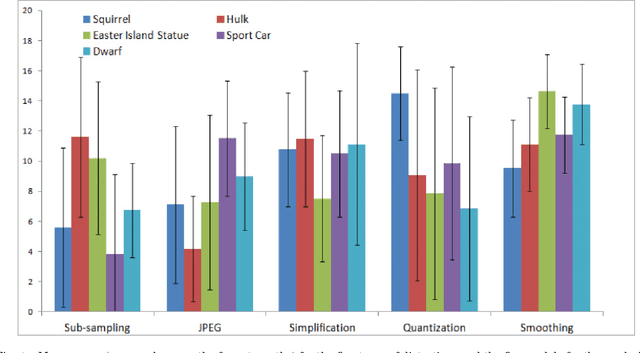Guillaume Lavoue
Multi-resolution deep learning pipeline for dense large scale point clouds
Sep 23, 2021



Abstract:Recent development of 3D sensors allows the acquisition of extremely dense 3D point clouds of large-scale scenes. The main challenge of processing such large point clouds remains in the size of the data, which induce expensive computational and memory cost. In this context, the full resolution cloud is particularly hard to process, and details it brings are rarely exploited. Although fine-grained details are important for detection of small objects, they can alter the local geometry of large structural parts and mislead deep learning networks. In this paper, we introduce a new generic deep learning pipeline to exploit the full precision of large scale point clouds, but only for objects that require details. The core idea of our approach is to split up the process into multiple sub-networks which operate on different resolutions and with each their specific classes to retrieve. Thus, the pipeline allows each class to benefit either from noise and memory cost reduction of a sub-sampling or from fine-grained details.
Subjective and Objective Visual Quality Assessment of Textured 3D Meshes
Feb 08, 2021



Abstract:Objective visual quality assessment of 3D models is a fundamental issue in computer graphics. Quality assessment metrics may allow a wide range of processes to be guided and evaluated, such as level of detail creation, compression, filtering, and so on. Most computer graphics assets are composed of geometric surfaces on which several texture images can be mapped to 11 make the rendering more realistic. While some quality assessment metrics exist for geometric surfaces, almost no research has been conducted on the evaluation of texture-mapped 3D models. In this context, we present a new subjective study to evaluate the perceptual quality of textured meshes, based on a paired comparison protocol. We introduce both texture and geometry distortions on a set of 5 reference models to produce a database of 136 distorted models, evaluated using two rendering protocols. Based on analysis of the results, we propose two new metrics for visual quality assessment of textured mesh, as optimized linear combinations of accurate geometry and texture quality measurements. These proposed perceptual metrics outperform their counterparts in terms of correlation with human opinion. The database, along with the associated subjective scores, will be made publicly available online.
 Add to Chrome
Add to Chrome Add to Firefox
Add to Firefox Add to Edge
Add to Edge